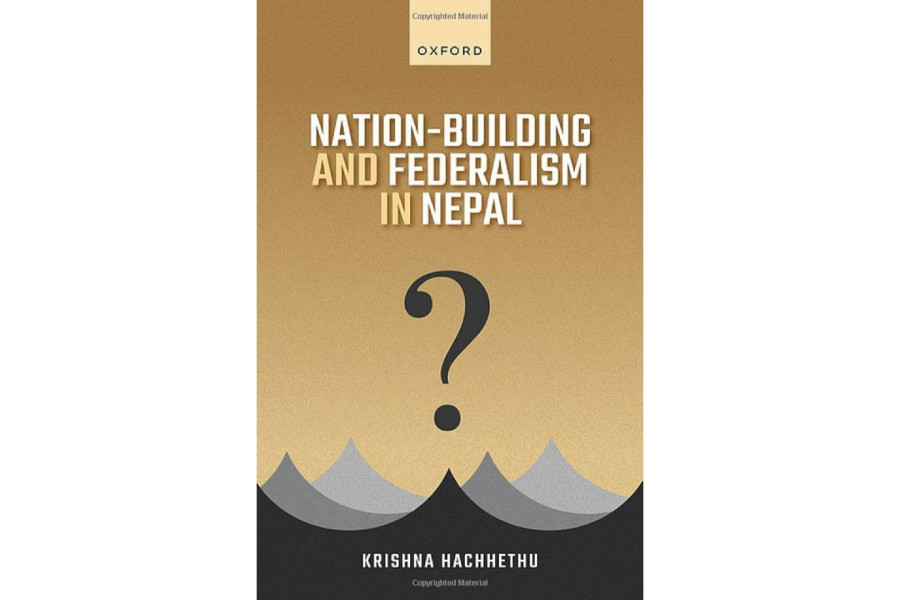Books
Handy guide to post-2006 Nepal
Krishna Hachhethu’s ‘Nation-Building and Federalism in Nepal: Contentions on Framework’ gives a blow-by-blow account of how federalism came about in Nepal, starting with the idea of ethnic federalism during the first constituent assembly.
Hisila Yami
While going through Krishna Hachhethu’s new book ‘Nation-Building and Federalism in Nepal: Contentions on Framework’, I kept thinking how this was just about the perfect time to get a new perspective on unfolding global, regional and local events. I think the book helped me do that.
At the global level, the war between Hamas and Israeli forces has all to do with questions of assimilation or accommodation, as well as cultural, religious and territorial issues. In the regional context, Narendra Modi in India has reduced the status of Jammu and Kashmir to that of union territories. In Nepal, the controversial naming of ‘Koshi’ province has ignited the agitation by Limbu and Kirati, the predominant indigenous community in the region, thereby hinting at the faulty territorial federalism practised in Nepal.
This book covers events from 2006 to 2015, providing a detailed account of the emergence of federalism in Nepal, starting with the idea of ethnic federalism during the period of the first constituent assembly to the enactment of territorial federalism during the promulgation of the constitution by the second constitution assembly. Alongside federalism, the book explores themes of secularism and inclusive democracy. It explains the transition of Nepal from a monarchical, Hindu, and monolithic state to a republican, secular, and federal state.
Similarly, this book discusses how UCPN (Maoist), the main advocates of the republican, secular and federal state, slowly transformed into a conservative status quo-ist party as they sought repeated entry into the government.
What adds flavour to this book is that it is not just a collection of information and events. The writer, a Newa professor of political science with international and national experiences, also had the privilege of being a member of the High-Level State Restructuring Recommendation Commission. This body was part of the constitution-making process through the constituent assembly. He delves into how the shifting positions of political parties on contentious issues have often derailed Nepal’s democratisation process. He cites examples from the Maoist Party and the Madhesi Jana Adhikar Forum, both instrumental in the formation of Nepal as a federal state.
The book explains the push and pull, concession and confrontation, commonalities and contradictions, assimilation and accommodation within and among the Nepali political parties, as well as how external factors affect them.
It is also worth reading for a new theoretical framework the author proposes for Nepal: the concept of identity-based federalism that is neither purely ethnic federalism nor territorial federalism. Similarly, on nation-building, he advocates the concept of ‘state-nation’, a relatively new term, instead of the old ‘nation-state’.
Lastly, the big question mark printed on the book’s cover speaks volumes about the possibilities and challenges the new Nepal faces. There is a possibility of reverting back to the old Nepal with its monarchical, Hindu and unitary characters. There are thus growing challenges for Nepal to become a truly progressive republican, secular and federal state.
Questions are also directed at the parties, organisations and communities, as to whether they want to move backwards or forward in this important phase of Nepali history. The book ends with a pithy saying: the cycle of change suggests that today’s contention leads to tomorrow’s conflict, and then, the day after tomorrow, entirely new horizons may open up.
And let us not forget the opening of the book with Nepal’s new national anthem: “We are a garland of hundreds of flowers…. multiple ethnicities, languages, religions and cultures… ours is a progressive nation…”
However, for the benefit of general readers, the book would have been more informative had Hachhethu gone into the definitions and differences between ‘nation’ and ‘state’ before embarking upon differences between ‘nation-state’ and ‘state-nation’ and his preference for state-nation. Similarly, when mentioning nationalism, he could have delved more into cultural nationalism based on Hinduism, which is now invading the minds of mainstream political parties and affecting the general masses, challenging the very concept of inclusive democracy, secularism and identity-based federalism.
Similarly, the book fails to mention how political parties’ apathy to the failing economic condition, hesitation to restructure bureaucracy and judiciary as well as to bolster the republic and federalism has led to the de-politicisation of the nation, creating new grounds for populism and conservative forces. Fed up with rising prices, growing unemployment and instability, people are questioning the very spirit of federalism, particularly on the question of the affordability of provincial states. They are in a mood to revert to a monolithic state in the name of Hinduism and monarchy, hoping this will give stability to the country.
Interestingly, new alternative parties are coming up to challenge old mainstream parties that seem solely concerned with the number game to stay in power. They are asking questions, but they are not clear about what they want exactly. In this context, Hachhethu’s book will be useful to this new generation of politicians who need to know the history of present-day Nepal to realise the importance of the new republican, secular, federal and inclusive order.
Nation-Building and Federalism in Nepal: Contentions on Framework
Author: Krishna Hachhethu
Year: 2023
Publisher: OUP Oxford
Yami is a vice chair of Socialist Party of Nepal and former minister.




 20.78°C Kathmandu
20.78°C Kathmandu













